

Matt Robinson
2026 Skoda Fabia 130 review: Quick drive
52 Minutes Ago
The way McLaren integrates hybrid technology into the Artura, and the seamless synchronicity with which it pairs with the V6 is pure genius.
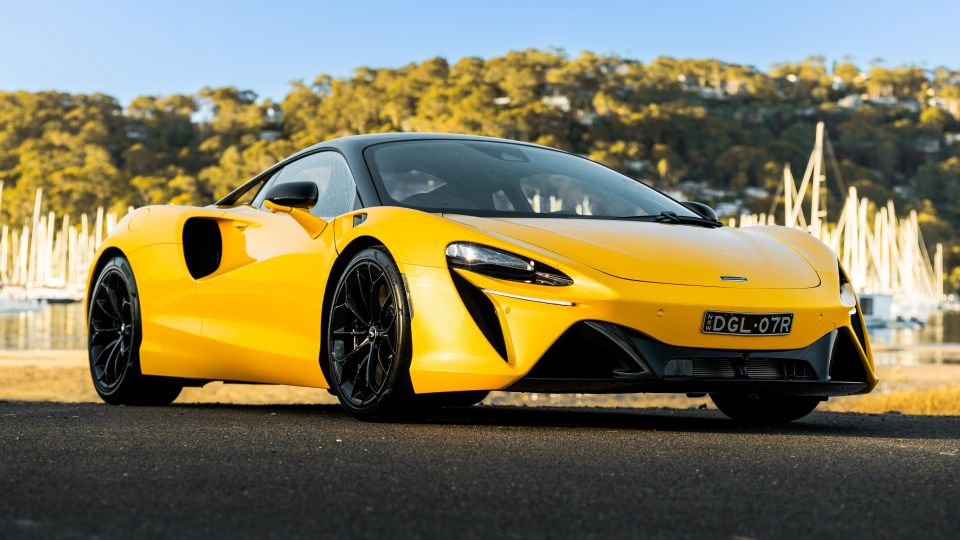
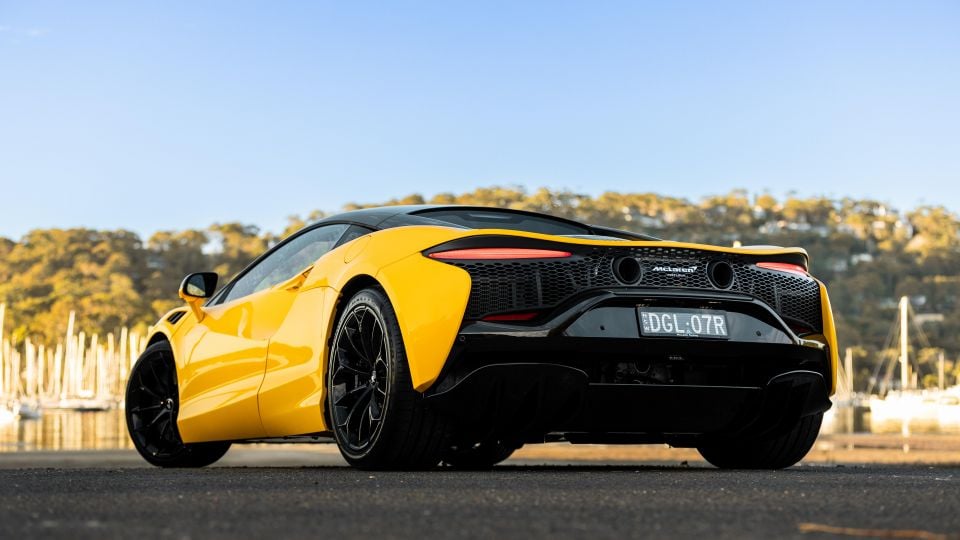

Senior Road Tester

Senior Road Tester


Senior Road Tester

Senior Road Tester
Where expert car reviews meet expert car buying – CarExpert gives you trusted advice, personalised service and real savings on your next new car.
It’s true, most of the McLarens I’ve driven have generally been exclusively on track, or at least with a no-holds-barred road drive on some of the world’s most epic twisties in Portugal, Italy or Spain.

But this time it’s quite a different testing scenario. Firstly, because I’m piloting the 2024 McLaren Artura – the marque’s first ever crack at a series-production hybrid supercar; and secondly, I’ll be commuting with it on local turf in Sydney, like a regular McLaren owner.
It’s going to be a properly revealing week too, especially on the question of the daily practicality of living with one of the most technically advanced series-production supercars on the planet, and whether or not a hybridised McLaren still feels as dialled-in and as utterly engaging as something like a 720S, or indeed, the latest and greatest weapon from Woking – the 750S.
And while McLaren’s current ‘everything for a reason’ design philosophy might make it a tad difficult for punters and aficionados alike to pick the Artura from any other McLaren supercar in the brand’s current stable – it still boasts an all-new body which the carmaker describes as ‘organic’ and ‘shrink-wrapped’.
Indeed, Artura is fractionally shorter than a 720S, and even more so up against the newer 750S. But regardless of how you might describe McLaren’s current design language, you also can’t blame them for sticking with the playbook given just how dialled in these cars are both on and off the track.
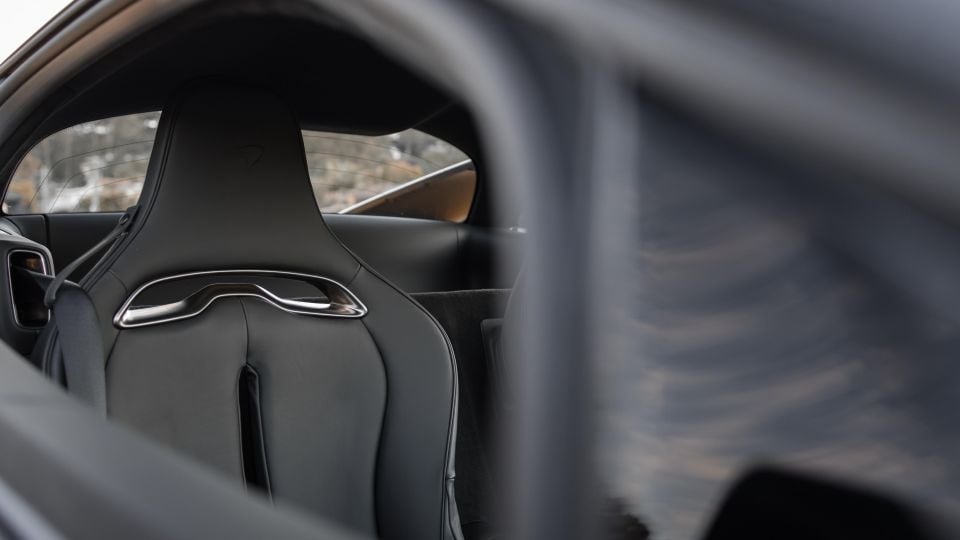
It’s not just a new body either. The Artura boasts a smorgasbord of all-new technologies and engineering firsts for McLaren; including a new Carbon Lightweight Architecture (MCLA), a 3.0-litre V6 with an e-motor, lightweight eight-speed transmission, multi-link rear suspension, fluid-filled mounts for the powertrain, and a new electrical architecture.
Even the Pirelli P Zero tyres are next-generation, and boast something called Pirelli Cyber Tyre technology that’s claimed to offer similar grip levels to Trofeo R tyres but with less road noise.
Nevertheless, the Artura is a thoroughly impressive car even at standstill, and one that boasts an aggressive form and ultra-low stance. I’m a huge fan of the meticulous metal mesh that starts on the engine cover and continues above the rear bumper that also incorporates the high-set dual exhaust tips and slit-like LED tail lights. It’s less about aesthetics and more about thoughtful industrial design in this case.
It’s also spectacular for its perfect marriage between form and function and suitably enhanced by minimal shut lines and a multitude of built-in aero devices designed to provide maximum downforce and high-speed stability without using a roof-height rear wing.

There’s a number of cooling intakes, air-flow-controlling vents and flaps spread purposefully around the body, culminating in a superb view of McLaren’s new lightweight eight-speed transmission through a large gap between the rear bumper and diffuser. It looks like a full-blown GT3 car from this angle with precision F1-like engineering on display here in the same way you might look at fine art.
I’m not a massive fan of Volcano Yellow as per our tester (I’d be choosing either Mantis Green, McLaren Orange, or Amaranth Red from the Elite palette for my Artura), but the black ten-spoke wheels, roof and venting do make the yellow pop regardless.
But well beyond Artura’s aesthetic values there’s so much innovation at work here you wonder how it all comes together in one seamless driving experience.
For 2024 the McLaren Artura starts from $464,675 before on-road costs, and in Porsche money that will buy you the ferociously quick 911 Turbo ($463,200).
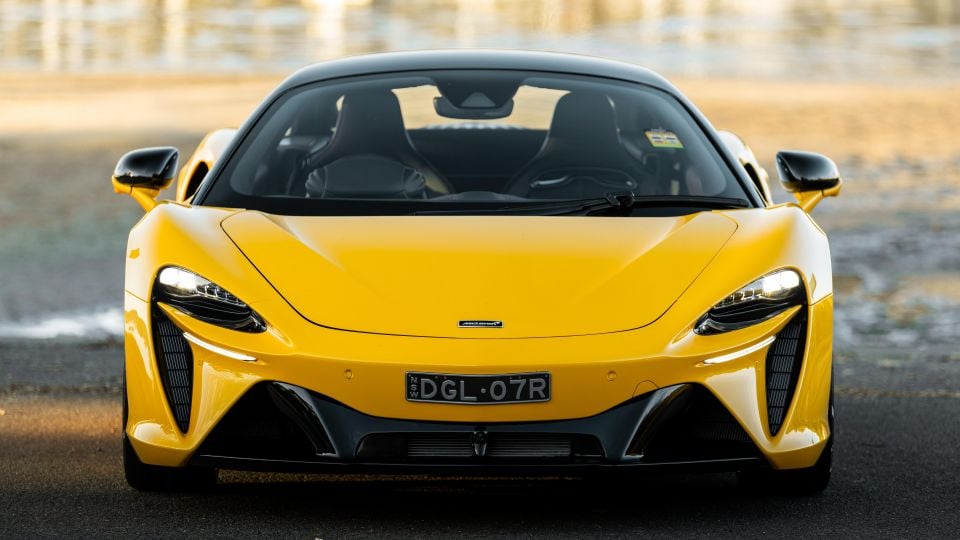
Mind, it’s not the entry into McLaren ownership. The GT, which is powered by a 4.0-litre twin-turbo V8, kicks off from $413,897 excluding on-roads.
However, the Artura’s direct rival in the supercar stakes is the Ferrari 296 GTB, which also employs a 3.0-litre twin-turbocharged V6 plug-in hybrid powertrain like the McLaren, only it wears a considerably higher price tag at $568,300 plus on-roads.
Cross-shoppers might also look at the now-ageing V10-powered Lamborghini Huracan Tecnica from $440,900 or even the EVO AWD from $468,630, both excluding on-road costs.
Another would-be competitor is the Maserati MC20, priced from $467,000. But while it uses a similar 3.0-litre displacement twin-turbo V6, there’s no hybrid component.
2024 McLaren Artura pricing:
Pricing excludes on-road costs
To see how the Artura lines up against its rivals, check out our comparison tool.
Buy your new car without the stress. It's fast, simple and completely free.

Great service from Travis and team, second time I have used this business would not hesitate to recommend them to anyone
Craig C.
Purchased a Ford Ranger in Sunshine Coast, QLD
CarExpert helped Craig save thousands on his Ford Ranger, now let us save you on your next new car.
Find a dealThere are elements of luxury inside the Artura; like the full-Nappa leather/Alcantara upholstery from floor to ceiling and those exquisite metal speaker grills with an open mesh pattern matching that on the engine cover.
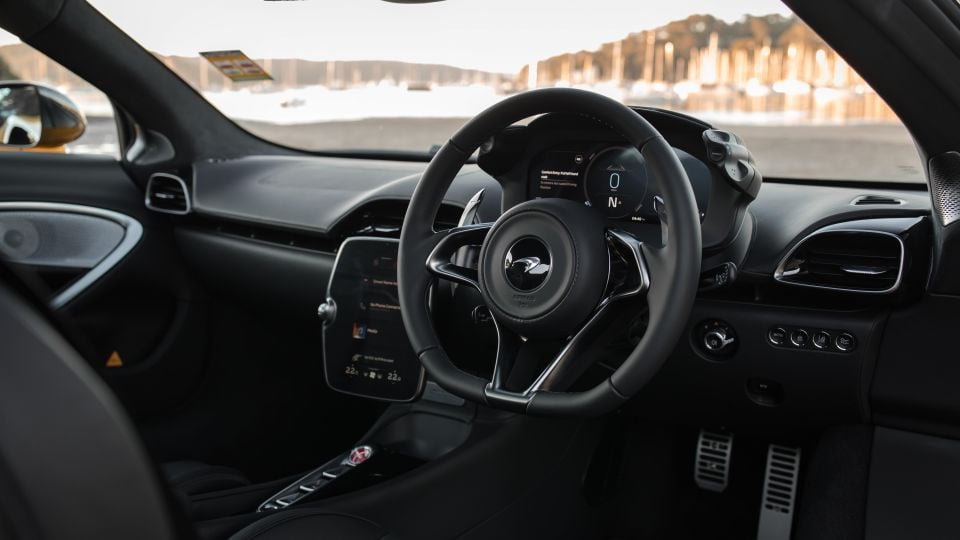
But first you need to get into the car, and wonky knees or bad hips might mean it’s a bit of a struggle.
The upward opening dihedral doors don’t leave as much of a gap as you might imagine and those sports seats are set deep into the carbon-fibre monocoque which can make it a bit of a challenge – at least, until you’ve worked out your own system to drop into them.
McLaren more than any other series supercar brand seems more singularly focused on the driver-centric cockpit. The leather-wrapped three-spoke steering wheel is utterly devoid of buttons, touchpads, toggles or scroll wheels and there’s no fancy moulding of the rim itself like you find on competing makes and models. It’s refreshing to have that level of focus in a road car.

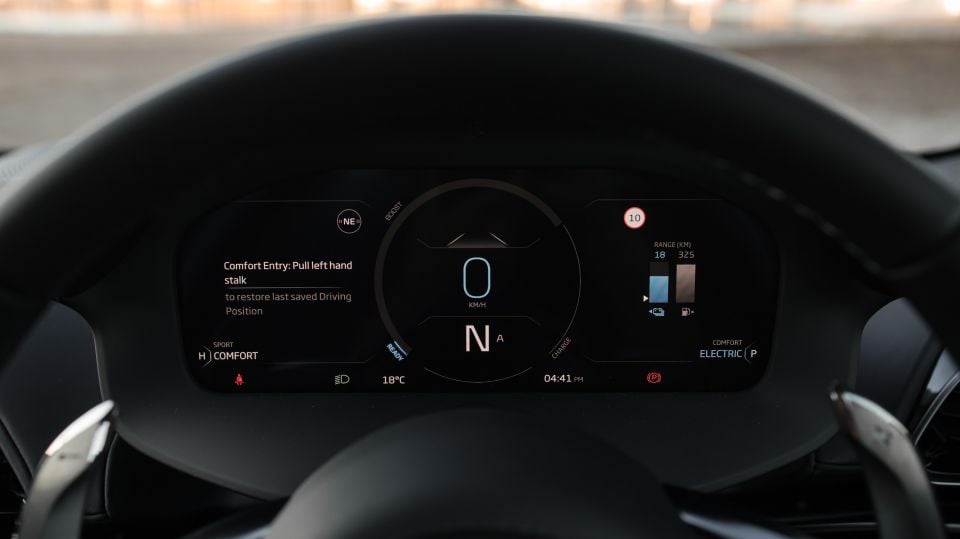
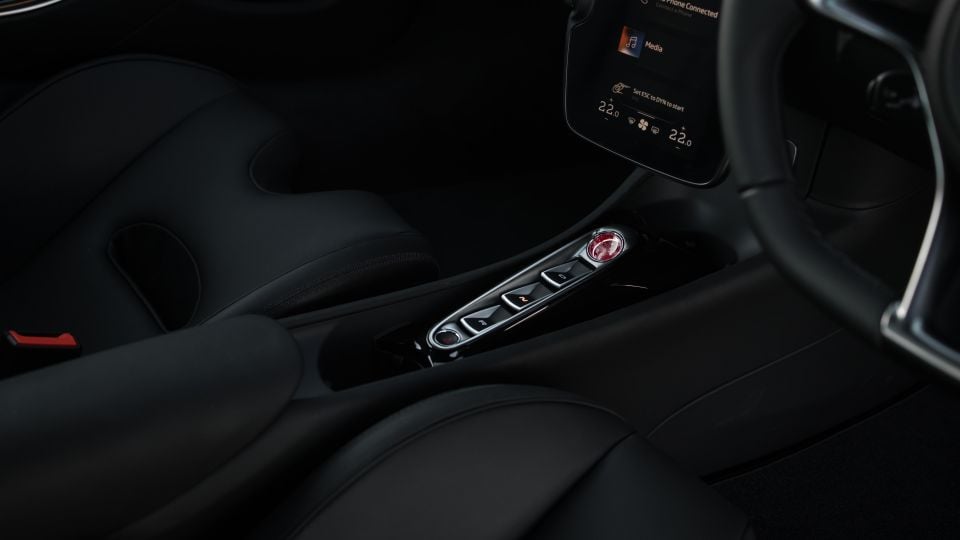
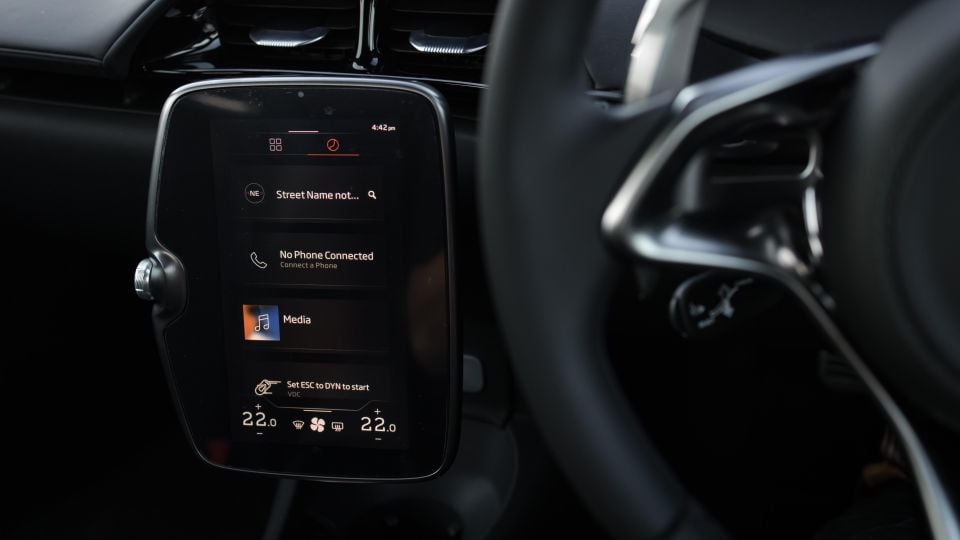
Separate powertrain and handling mode controls have been relocated to the binnacle that houses the digital driver’s display. It’s connected to the steering column so the ergonomics are perfect, as you never have to take your hands off the steering wheel – that includes a ‘Manual’ button.
The red start/stop button and transmission modes are still situated neatly in the centre console, flanked by a cupholder and receptacles for phones, keys and the like.
Further forward is McLaren’s latest 8.0-inch portrait infotainment touchscreen with smartphone mirroring. It offers quick response (especially with Apple CarPlay) and is positioned and angled within easy reach of the driver. While it might be smaller than you’re used to these days in your family hauler, it’s perfectly sized in a supercar environment.
There’s a small bank of conveniently positioned buttons to the right of the steering wheel and headlight dial that take care of the front-lift function as well as frunk opener, lock/unlock and lane assist functions – for me it’s always an immediate ‘off’ in the case of the latter.
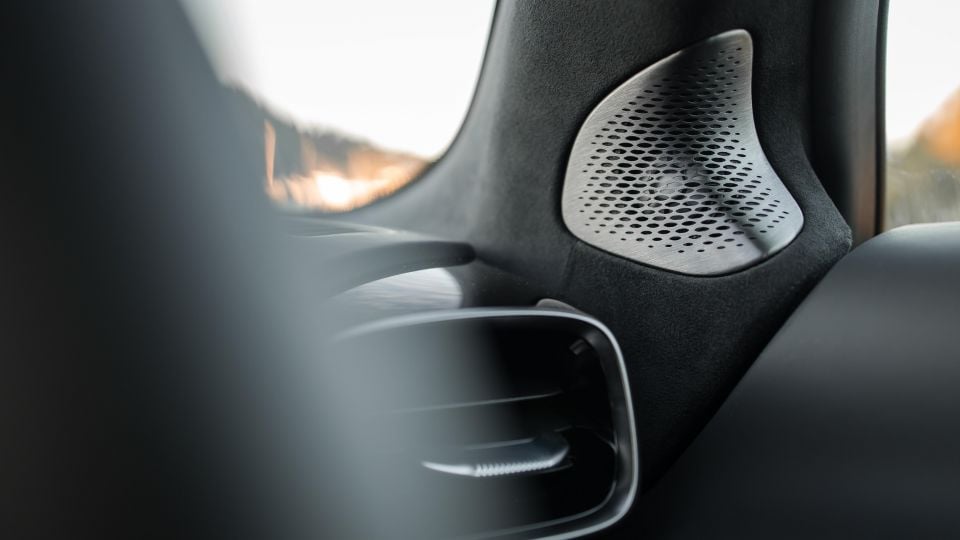
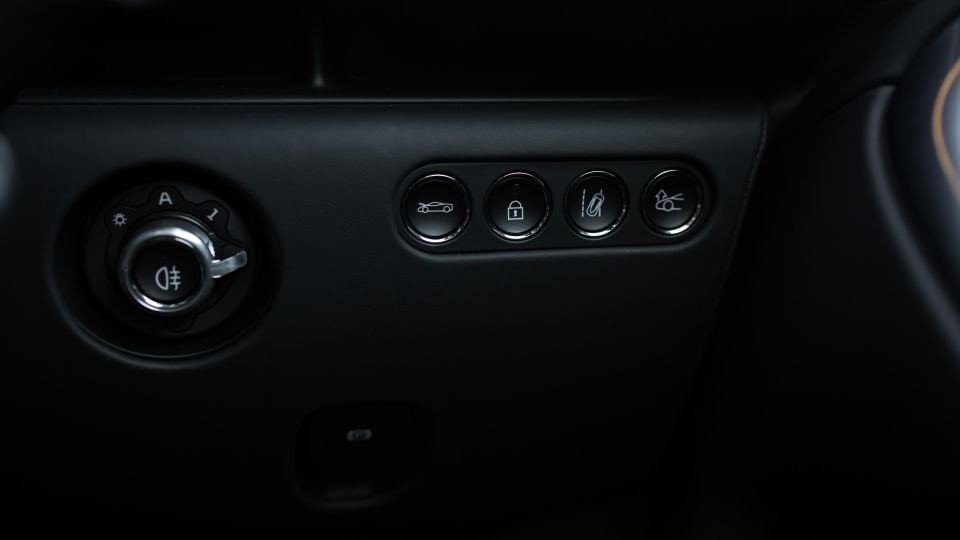
It’s minimalistic by design but the fit and finish of the materials are first class, along with plenty of space for the driver and passenger to get comfortable.
Luggage space comprises a small parcel shelf behind the seats (though it’s not that practical as things can slide around), decent door bins that work even when the doors are opened and a thoroughly cavernous 160-litre ‘frunk’ which is substantially larger than that in a Porsche 911 (132 litres).
Unlike anything else from McLaren’s series sports car lineup, Artura uses a petrol plug-in hybrid powertrain encompassing a 3.0-litre twin-turbo V6 (instead of the trademark V8) engine with a compact electric motor mounted in the transmission bell housing.
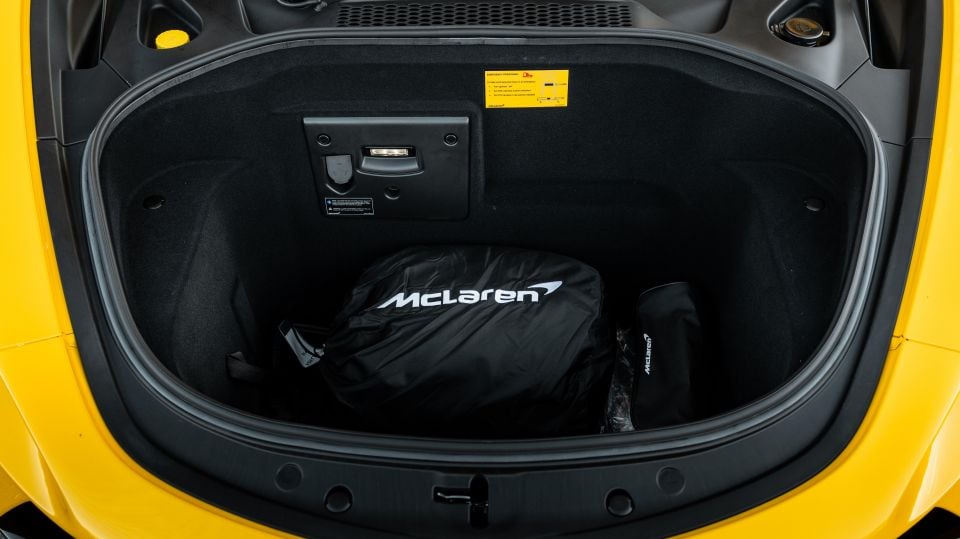
And instead of the usual 90-degree V-angle, this V6 sits at 120 degrees in the Artura, ostensibly to accommodate the turbochargers in the ‘hot-vee’ – that alone claims to deliver better throttle response (not something McLarens have ever lacked either), and higher rev limits.
It’s paired with a lightweight eight-speed dual-clutch transmission that integrates McLaren’s first ever e-diff (electronic locking differential) which drives the rear wheels exclusively. There’s no conventional reverse gear either; instead, Artura uses the electric motor do do that, which saves weight.
On its own, the electric motor produces 70kW of power and 166Nm of torque, though, the combined output of the dual power sources is 500kW at 7500rpm and 720Nm between 2250rpm-7000rpm. It’s an exceptionally wide torque curve that sees Artura rocket from standstill to 100km/h in 3.0 seconds flat, and from 0-200km/h in a blistering 8.3 seconds. Top speed is electronically limited to 330km/h.
On electric power alone, Artura can reach speeds up to 130km/h and claims an EV driving range of 31 kilometres. It also claims an average fuel consumption of 4.6L/100km on the combined WLTP cycle.

I failed to get anywhere near that number, given I was far too addicted to the angry exhaust note in Sport or Track mode. Having said that, it’s not quite as scintillating as the Ferrari 296 GTB – I don’t think there’s any legitimate rival in that respect.
The Artura’s 7.4kWh battery pack doesn’t offer fast charging, so charging from zero to 80 per cent will take 2.5 hours using a standard EVSE cable.
The V6 motor alone weighs 160kg (50kg less than the V8), but crucially is 190mm shorter allowing for Artura’s compact packaging. Likewise, the total weight of the hybrid components including the e-motor and 7.4kWh battery pack is 130kg.
Tipping the scales at 1498kg (kerb weight or 1395kg dry), Artura is significantly lighter than the rival Ferrari 296 GTB (more than 1600kg kerb weight or 1470kg dry), and it’s also $119,000 less expensive, too.
I’ve got to be honest, I was worried the Artura would be somehow less impressive than the V8 McLarens I’ve driven; namely the impossibly good 720S, or the more recent 750S – arguably the most complete daily driver McLaren has ever produced.
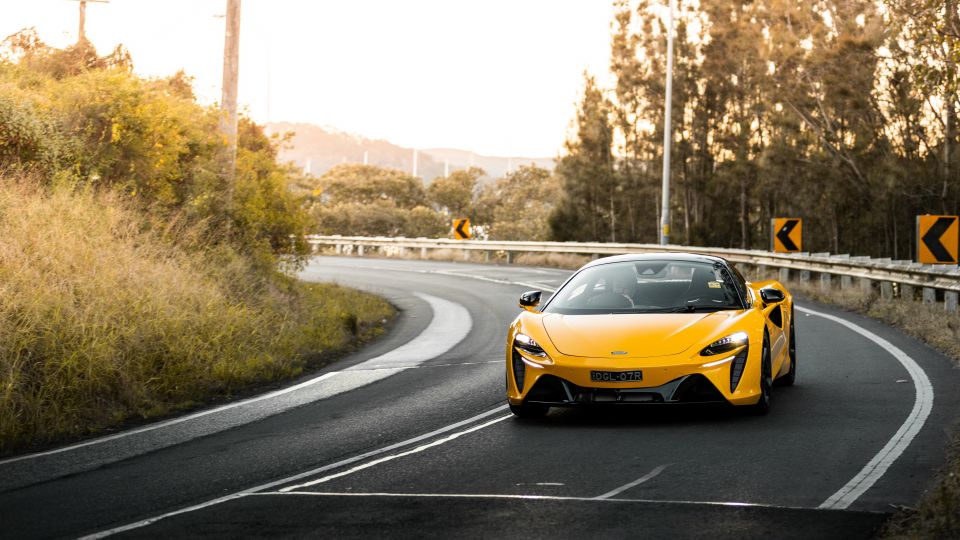
Nevertheless, to the outsider it would appear Artura has replaced the 570S as its entry-level offering in the Sports Series notwithstanding the V8-powered GT that sits below it.
Make no mistake, the Artura is a noticeably more polished bit of kit than the 570S ever was – both for its road-going dynamics and granular level of driver feedback. It’s closer to the 720S road manners, but at this level of McLaren road cars it’s about incremental grades of engineering perfection rather than one model being demonstrably better than the another.
And like any other supercar from Woking, the Artura is an immensely rapid machine designed to deliver brain-numbing thrust that simply blows your mind over and over again – and it always feels quicker than the factory claim.
What’s more, I’d be lying if I didn’t say I’m always a little intimidated when hopping back into the driver’s seat in a McLaren, especially one with dual-propulsion packing this much poke.
There are obvious social benefits to the hybrid setup, not the least of which are early morning departures made significantly less stressful given the dead silence default on startup, but for one or two electrical groans and moans as the system fires up in E-mode.
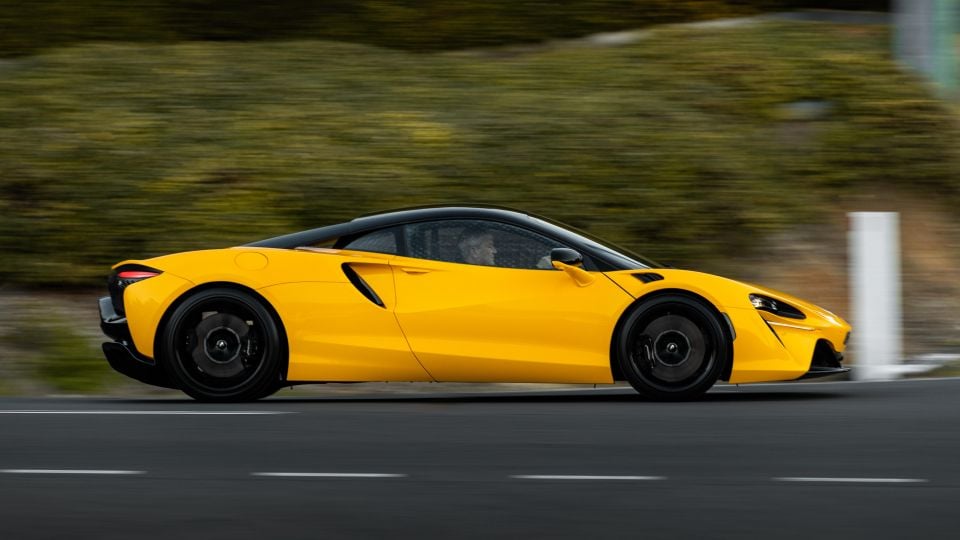
But once you’re out of earshot of neighbours or at any other time of the day you’ll want to tap the rocker switch to engage Sport for one of the best exhaust notes McLaren has produced to date – and that includes the 750S. It’s not a boisterous note, rather it’s a deeper angrier tone at idle accentuated by a pair of black anodised and top-mounted exhaust pipes of respectable size.
You’ll need but one or two corners only before you start celebrating the Artura’s utterly inspiring levels of steering feedback and precision like nothing you’ve ever driven before. It’s electro-hydraulic, while the steering column is mounted directly onto a mega-stiff cross-car beam behind the facia.
It’s also perfectly weighted and calibrated for a totally unassisted feel on-centre and through every other millimetre of input until full lock. It’s more than enough to make a Porsche 911 feel somehow numb.
There’s a lot more to it of course, including the stiff carbon-fibre tub, completely redesigned rear suspension with a multilink approach, and a front suspension that uses dual aluminium wishbones like those developed for the 600LT.
The result is a supercar with uncanny levels of agility and a natural willingness to want to carry more speed in the corners but with epic grip from the Pirelli P Zeros.

It’s also comes down to the Artura’s chassis balance and the way each end of the car communicates with the other through the tiller. It’s just so positively settled despite big lateral loads this car is capable of carrying.
And don’t worry about understeer – it’s not something you’ll have to deal with in the Artura or any other McLaren I’ve driven – even on track.
But here’s the thing; even sticking to city speed limits, the Artura can be just as captivating thanks again to the endless levels of feedback delivered through all the major mechanical controls – throttle, brake, steering and eight-speed dual-clutch transmission, all of which seem to be in perfect sync all the time.
Plus it does all this while delivering benchmark levels of ride compliance over all manner of broken roads. That ride quality alone has come to be McLaren trademark with its Sports Series, only in Artura it’s even better than I can recall of previous models.
Vision is great all-round too, another trademark McLaren trait, but it’s even better in the Artura which boasts a large-ish rear window and no rear wing to compromise the view thanks to significant natural aero built into its overall design.
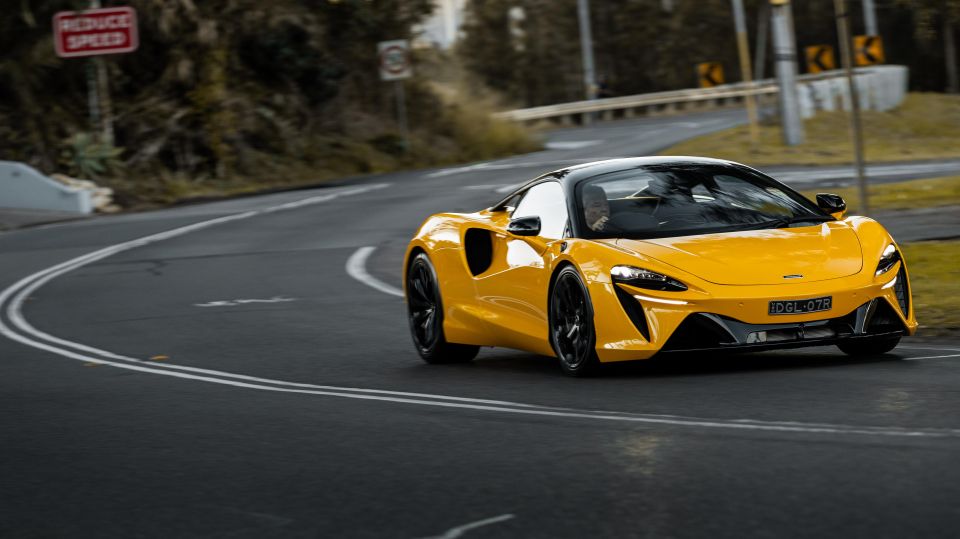
Where expert car reviews meet expert car buying – CarExpert gives you trusted advice, personalised service and real savings on your next new car.
But on less-travelled roads where conditions permit more freedom to explore the Artura’s explosive throttle response and corner exit pace, you’ll marvel at its predictability, linearity and blinding acceleration when you punch it proper. Again, factor in those sure-footed Pirellis, McLaren’s bespoke tune of its Proactive damping system and the e-diff providing maximum footprint at all times.
If turbo lag was ever thing on a McLaren, it’s never been something I was aware of. In any case, the instant torque generated by the electric motor fills any torque gap that might emerge from the get-go or between cog swaps.
Oh yes, the Artura’s eight-speed DCT is another precision-based piece of advanced engineering. Even left to its own devices it bangs through the gears in less than 200 milliseconds. Bury the stoppers into a corner and it’ll rifle down three gears in the blink of an eye, accompanied by perfectly timed throttle blips.
Even so, you won’t be able to resist the dedicated manual button and paddle-shift pulling – in fact, any excuse to use them when downshifting. It’s a proper all-encompassing driving experience that will make you feel like an F1 driver.
And those brakes – the Artura gets standard carbon-fibre rotors providing massive stopping power under any conditions, and while I didn’t get to track the car this time around my recent track test of the 750S revealed zero brake fade after multiple sessions, with hard braking at 280km/h down the main straight at Estoril circuit in Portugal.
Artura highlights:
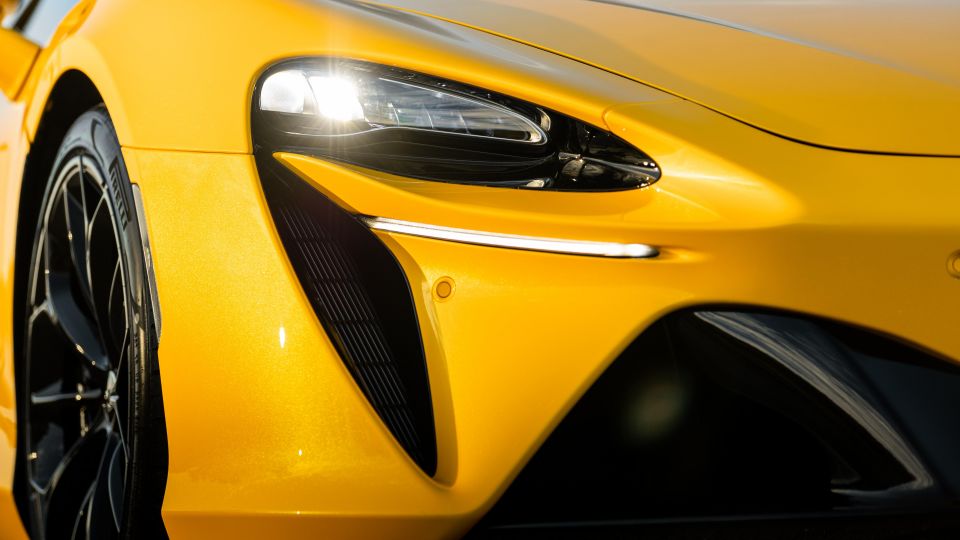

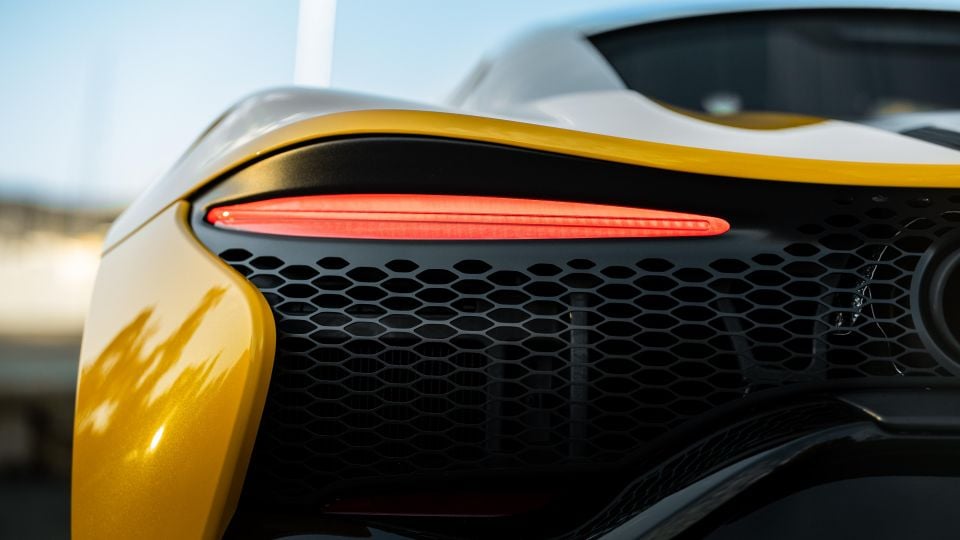

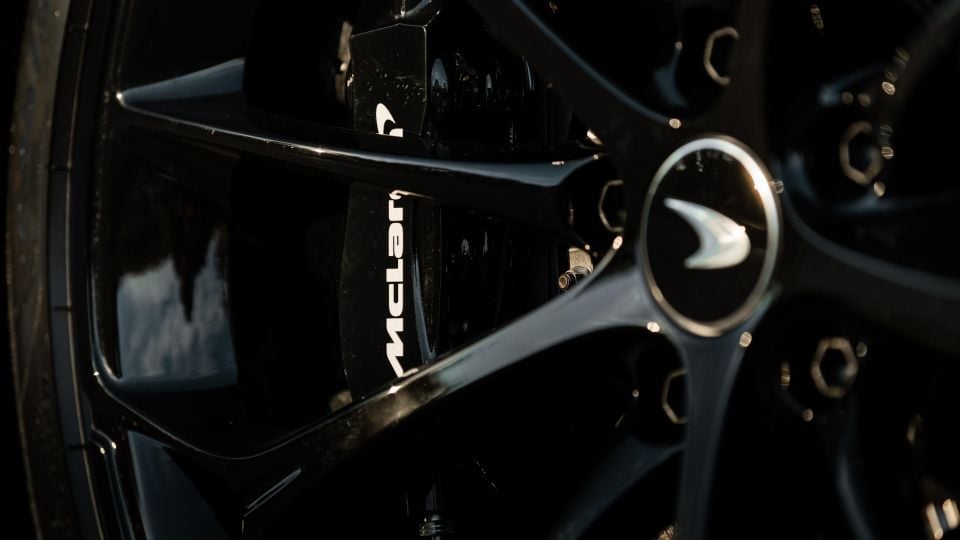
Options:
Practicality Pack ($NCO) adds:
Our Artura tester was also fitted with the TechLux Pack (only available if the Practicality pack is selected).
TechLux Pack:
There are also black and carbon-fibre interior and exterior packages.
The Artura (or any other McLaren for that matter) has yet to be tested by ANCAP or Euro NCAP.
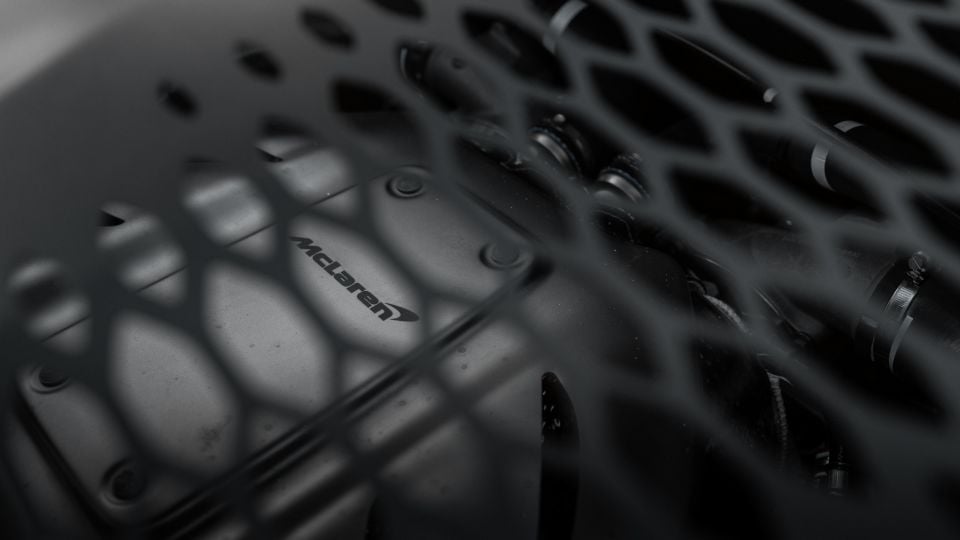
It’s the same for any make and model of supercar – primarily down to cost of crash testing multiple cars.
There’s no active safety technology standard, though the optional Technology Pack adds:
Additionally, our Artura tester was equipped with front and rear parking sensors with rear-view camera, and a front-lift system (essential in my view).
The Artura is covered by a five-year, 100,000km vehicle warranty (whichever comes first), a six-year battery warranty and a 10-year body warranty.
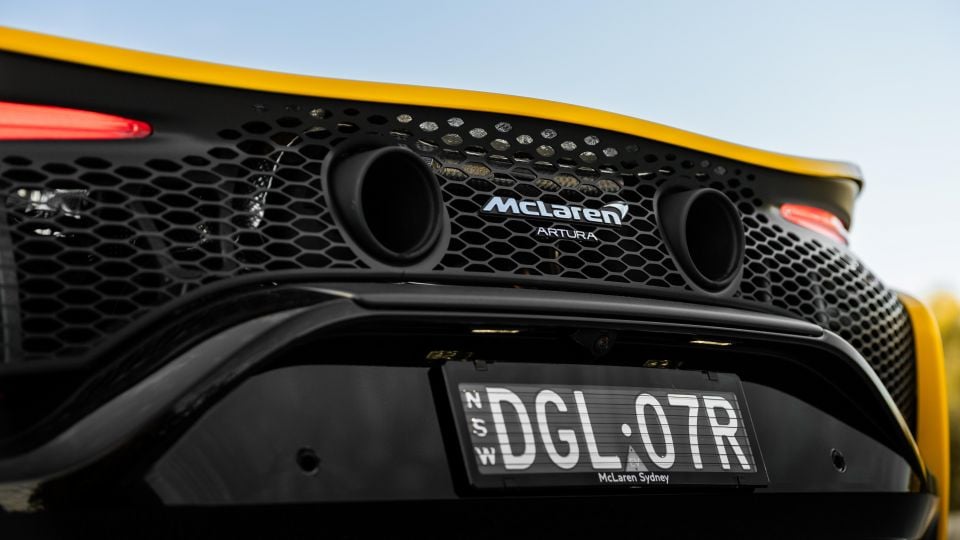
It also comes with three years of free scheduled servicing – of particular benefit to those McLaren owners who drive their cars frequently.
The way in which McLaren integrates hybrid technology into the Artura and the seamless synchronicity with which it pairs with the V6 is pure genius.
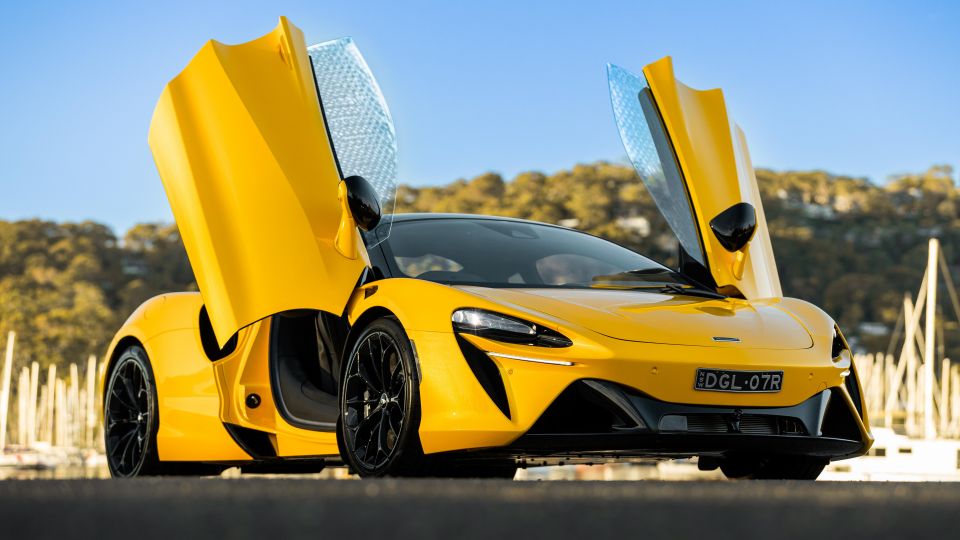
Not for the technology alone, mind; but for the fact none of the insane levels of feedback, performance and driver engagement have been impaired by downsizing to a V6 and adding an electric motor.
Bigger picture, the Artura alone proves the future of McLaren sports cars is all but assured. While we have no doubts the next iteration will be better again, it’s hard to see where even smaller improvements could be made to this very formula given the wholistic way in which it delivers absolute driver satisfaction.
Click the images for the full gallery
MORE: Buy a McLaren Artura MORE: Everything McLaren Artura
Where expert car reviews meet expert car buying – CarExpert gives you trusted advice, personalised service and real savings on your next new car.
Anthony Crawford is a CarExpert co-founder and senior presenter with 20+years in automotive journalism and content creation.


Matt Robinson
52 Minutes Ago


Damion Smy
52 Minutes Ago


Damion Smy
15 Hours Ago


Damion Smy
16 Hours Ago


Damion Smy
18 Hours Ago


Damion Smy
19 Hours Ago